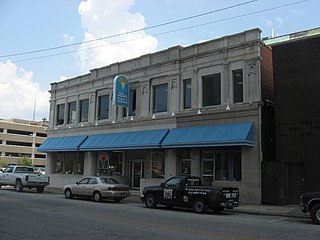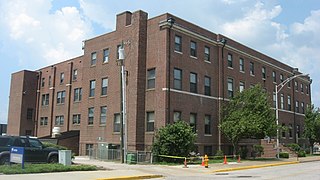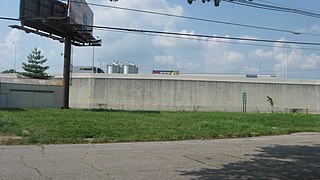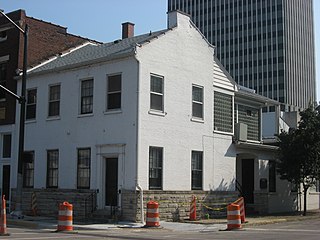Sunset Park Pavilion | |
Sunset Park Pavilion, September 2011 | |
| Location | 411 SE. Riverside Dr., Sunset Park, Evansville, Indiana |
|---|---|
| Coordinates | 37°57′57″N87°34′26″W / 37.96583°N 87.57389°W Coordinates: 37°57′57″N87°34′26″W / 37.96583°N 87.57389°W |
| Area | 0.1 acres (0.040 ha) |
| Built | 1912 |
| Architect | Boyle, Harry E.; Kleiderer, Charles F., & Co. |
| Architectural style | Bungalow/craftsman |
| NRHP reference # | 92000673 [1] |
| Added to NRHP | June 17, 1992 |
Sunset Park Pavilion, also known as the Sunset Park Shelter House/Pagoda, is a historic park pavilion located at Evansville, Indiana. It was built in 1912, and is a one-story shelter house in the form of a Japanese pagoda. It is constructed of reinforced concrete and is topped by a red tile roof that is characteristically upturned at the corners. It was originally an open air facility, but has been enclosed. [2] It was restored in 1993 and now houses the Evansville convention and visitors bureau. [3] [4]
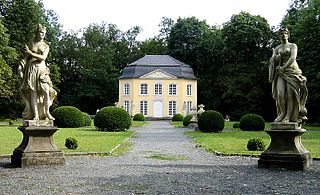
In architecture, a pavilion has several meanings. In architectural terminology it refers to a subsidiary building that is either positioned separately or as an attachment to a main building. Often its function makes it an object of pleasure.

Evansville is a city and the county seat of Vanderburgh County, Indiana, United States. The population was 117,429 at the 2010 census, making it the state's third-most populous city after Indianapolis and Fort Wayne, the largest city in Southern Indiana, and the 232nd-most populous city in the United States. It is the commercial, medical, and cultural hub of Southwestern Indiana and the Illinois-Indiana-Kentucky tri-state area, home to over 911,000 people. The 38th parallel crosses the north side of the city and is marked on Interstate 69.

A pagoda is a tiered tower with multiple eaves, built in traditions originating as stupa in historic South Asia and further developed in East Asia with respect to those traditions, common to Nepal, China, Japan, Korea, Vietnam, Myanmar, India, Sri Lanka and other parts of Asia. Some pagodas are used as Taoist houses of worship. Most pagodas were built to have a religious function, most commonly Buddhist, and were often located in or near viharas. In some countries, the term may refer to other religious structures. In Vietnam and Cambodia, due to French translation, the English term pagoda is a more generic term referring to a place of worship, although pagoda is not an accurate word to describe a Buddhist vihara. The modern pagoda is an evolution of the stupa which originated in ancient India. Stupas are a tomb-like structure where sacred relics could be kept safe and venerated. The architectural structure of the stupa has spread across Asia, taking on many diverse forms as details specific to different regions are incorporated into the overall design. Many Philippine bell towers are highly influenced by pagodas through Chinese workers hired by the Spaniards.
It was added to the National Register of Historic Places in 1992. [1]

The National Register of Historic Places (NRHP) is the United States federal government's official list of districts, sites, buildings, structures, and objects deemed worthy of preservation for their historical significance. A property listed in the National Register, or located within a National Register Historic District, may qualify for tax incentives derived from the total value of expenses incurred preserving the property.















